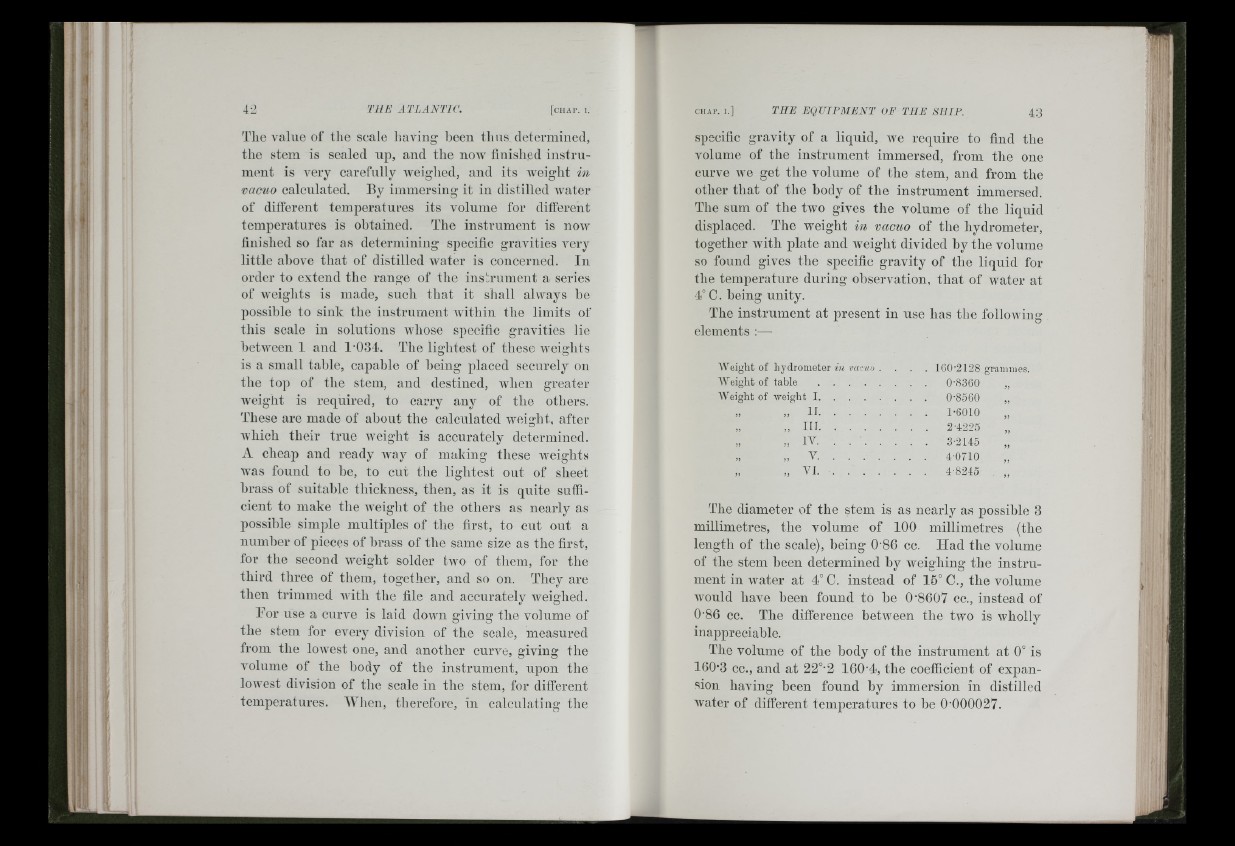
Ir I tí
i W
i s
i” d■<
Ibí
ÍT The value of the scale having heen thus determined,
the stem is sealed uj), and the now finished instrument
is A’ery carefully Aveighed, and its Aveight in
vacuo calculated. By immersing it in distilled Avater
of different temperatures its volume for different
temperatures is ohtained. The instrument is noAv
finished so far as determining specific gravities A’ery
little ahove that of distilled Avater is concerned. In
order to extend the range of the instrument a series
of Aveights is made, such that it shall always he
possible to sink the instrument Avithin the limits of
this scale in solutions \Adiose specific gravities lie
hetAA’een 1 and 1-031. The lightest of these Aveights
is a small tahle, capable of heing placed securely on
the top of the stem, and destined, AA’heu greater
Aveight is required, to carry any of the others.
These are made of about the calculated Aveight, after
Avhich their true Aveight is accurately determined.
A cheap and ready Avay of making these w’eiglits
was found to he, to cut the lightest out of sheet
brass of suitahle thickness, then, as it is quite sufficient
to make the Aveight of the others as nearly as
possible simple multiples of the first, to cut out a
number of pieces of brass of the same size as the first,
for the second Aveight solder Iavo of them, for the
third three of them, together, and so on. They are
then trimmed Avith the file and accurately Aveighed.
Bor use a curve is laid doAAm giving the volume of
the stem for every division of the scale, measured
from the loAvest one, and another curve, giving the
volume of the body of the instrument, upon the
loAA’est division of the scale in the stem, for different
temperatures. When, therefore, in calculating the
specific gravity of a liquid, we require to find the
volume of the instrument immersed, from the one
curve we get the volume of the stem, and from the
other that of the body of the instrument immersed.
The sum of the two gives tlie volume of the liquid
displaced. The weight in vacuo of the hydrometer,
together with plate and Aveight divided hy the volume
so found gives the specific gravity of the liquid for
the temperature during observation, that of water at
1°C. being unity.
The instrument at present in use has the following
elements :—
Weight of hydrometer m . . . . IGO'2128 graiiiiues.
Weight of table .......................................... 0-8360 „
Weight of weight 1......................................... 0'8560
» l i ...................................... 1-6010
„.......i n ................................. 2-4225
I,........IV........................................3-2145
„ V...................................... 4-0710
V I .......................................... 4-8245
The diameter of the stem is as nearly as possible 3
millimetres, the volume of 100 millimetres (the
length of the scale), heing 0 ‘86 cc. Had the volume
of the stem heen determined hy weighing the instrument
in water at 4° C. instead of 16° C., the volume
Avould liaA’e heen found to he 0'8607 cc., instead of
0-86 cc. The difference betAveen the two is wholly
inappreciable.
The volume of the body of the instrument at 0° is
160-3 cc., and at 22°-2 160-4, the coefficient of expansion
having been found by immersion in distilled
Avater of different temperatures to be 0-000027.